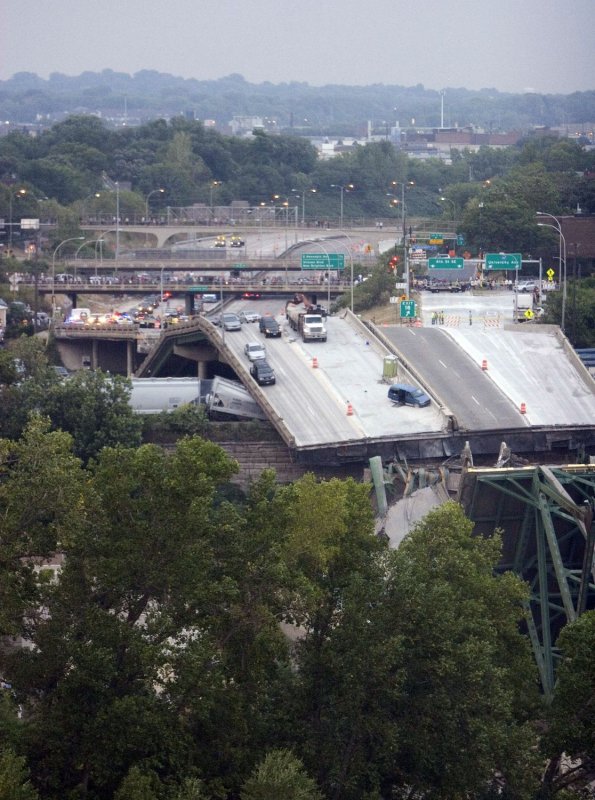WASHINGTON, Jan. 15 (UPI) -- A design error on the I-35W bridge in Minneapolis -- gusset plates that were too thin -- contributed to a deadly collapse, federal investigators said Tuesday.
Mark Rosenker, the chairman of the National Transportation Safety Board, said at a news conference in Washington that the plates should have been 1-inch thick and instead were one-half-inch thick, the St. Paul Pioneer Press reported. He said that the agency hasn't found a "probable cause" for the collapse but determined the gusset plates were significant.















